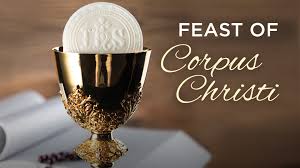
There are times in every family—no matter how busy—when everyone gathers around a table to share a meal. It might be during a birthday celebration, Christmas, Thanksgiving, Eid ul-Fitr, or a special anniversary.
These shared meals give us the chance to talk, to enjoy the best food we can offer, and to appreciate one another’s company. Sometimes, these occasions are remembered for many years—perhaps because of the people who were with us or something meaningful that happened.
One such memorable meal was the last meal that Jesus shared with his closest friends, the disciples. This took place in an upstairs room in Jerusalem during the Passover festival. It was a rare moment of quiet, away from the crowds that usually followed Jesus. All of his disciples were present—even Judas, who later that night would betray him.
The meal began in a surprising way: Jesus, their teacher and leader, knelt and washed the feet of each disciple. In the hot, dusty climate, it was common to have feet washed before eating, especially since people wore sandals—but this task was usually done by a servant, not a leader. Jesus explained that his followers should think of others before themselves, and serve one another with humility, just as he had done.
During this meal, Jesus spoke about his impending arrest and death. He revealed that one of those present had already planned to betray him. Despite knowing this, Jesus still chose to spend this special time with them.
As the meal continued, Jesus took bread, gave thanks to God, broke it, and shared it with his friends. He said, “Take, eat; this is my body.” Then he poured wine into a cup, gave thanks, and passed it around. He said, “This is my blood of the covenant, which is poured out for many for the forgiveness of sins.”
The disciples did not fully understand the significance of this moment until later. That evening would be their last meal together. Soon after, Jesus would be arrested, mocked, beaten, and crucified. Only after his resurrection did they begin to comprehend the deep meaning of what he had shared with them.
Today, Christians around the world remember this meal in a service known as The Lord’s Supper, Holy Communion, or the Eucharist. During this service, bread and wine are shared, just as Jesus did with his disciples, and his words are remembered. Although churches may celebrate it in slightly different ways, it is always a sacred and solemn occasion.
The festival of Corpus Christi gives Christians a special opportunity to give thanks for the body of Christ, especially as it is represented in the Eucharist. In the Roman Catholic tradition, this festival is often marked by a procession through the streets. A priest leads the procession, carrying a special gold or silver vessel called a monstrance, which holds the consecrated bread and wine.
After the procession, the congregation may return to their church for a special service—or gather at another church to continue the celebration.
When a person dies, people often visit their grave to lay flowers, reflect, or say a prayer. But there is no grave where Jesus’ body lies, because Christians believe he rose from the dead and ascended into heaven forty days later. Corpus Christi offers a time for believers to reflect on and honour the presence of Jesus Christ—his life, sacrifice, and the hope he brings.